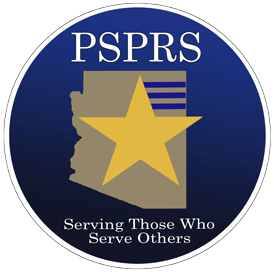March 19, 2020
Coronavirus, the stock market and your pension: Frequently asked questions
Here at PSPRS, we are working day and night to monitor the extreme fluctuations in the world's financial markets. We have a team of committed investment experts focused on how best to react to these changes and, whenever possible, how best to capitalize on potential opportunities that might benefit the system.
At the same time, we continue to have a strong commitment to keeping you informed about the status of the markets, the financial health of PSPRS, and the steps we are taking to protect our members, employers and Arizona's taxpayers.
Below you'll find a FAQ that should answer some of the most common questions we've been asked over the past two weeks.
Q: Is my pension safe?
A: Yes, retiree and survivor pensions of members of PSPRS-managed plans are determined by the number of years of credited service completed during a member’s career and the member’s average salary. Pensions are not based on the annual performance of the stock market.
Q: Does the turbulent stock market threaten the entire pension system?
A: No. While the COVID-19 outbreak is new and worrisome, there is nothing new about stock market volatility or the threat of an economic recession. The stock market and economy have recovered from a multitude of events, including the housing market crash in 2008, the attacks on Sept. 11, 2001, the “Dot Com” collapse during the early 2000s and the “Black Monday” stock market crash in 1987.
The PSPRS investment strategy – which minimizes risk more so than most public sector investment funds – has been designed to account for the market volatility triggered by the coronavirus and other external events and factors. As part of this strategy, PSPRS invests in many different asset classes, not just the stock market, to protect its members’ pensions and employers’ budgets.
Q: What is PSPRS doing to protect the trust that provides retiree and survivor pensions?
A: PSPRS, like most pensions, takes a long-term approach to investing. Over time, PSPRS has targeted an annualized return of 7.3 percent. This long-term forecasting takes into account that investment returns in a given year will either exceed or fall below the long-term assumed earnings rate. As of the last fiscal year ending June 31, 2019, PSPRS exceeded its assumed earnings rate over both 7-year and 10-year time frames.
While PSPRS hopes for economic stability, its investment team is on the lookout right now for opportunities to generate investment returns for the years and even decades to come. These opportunities may include buying publicly traded stocks at low prices or buying privately held assets at below market value from owners who may want or have to sell due to current economic conditions or other factors. Likewise, PSPRS may look to sell its interests in certain investments to pursue other opportunities and reduce risk to the trust.
Q: Is PSPRS better prepared to handle market fluctuations and/or a possible recession than it was during the housing market collapse in 2008?
A: PSPRS has taken many steps to further insulate the portfolio from market volatility. PSPRS entered this current market turmoil with a highly diversified investment portfolio already in place. While this mix of hundreds of public and private investment funds does not immunize PSPRS from investment losses in the current market environment, it does have the effect of making such losses, if any, less severe.
PSPRS also benefits from experience. Chief Investment Officer Mark Steed and Senior Portfolio Analyst Shan Chen led successful investing efforts during and after the housing market crash and Great Recession – strategies that have made PSPRS a national model for risk-averse public pensions. Similarly, PSPRS still employs many of the same nationally recognized investment consultants. As a result, PSPRS is well-positioned to evaluate and seize on investment opportunities that may arise from any economic fallout. Under the adage “buy low, sell high,” PSPRS is currently considering how best to re-deploy up to $1 billion during the next three to six months alone.
The pension benefit reforms passed through Propositions 124 and 125 in 2016 and 2018, respectively, will also help PSPRS manage through volatile markets with or without a recession. These reforms created a simple cost-of-living-increase for retirees of PSPRS-managed plans in place of an unsustainable pension benefit increase formula that hampered the system’s recovery in the wake of previous downturns.
Q: How can I learn more about PSPRS investments?
A: There are many resources for retirees, members, and the public to learn more about the PSPRS investment strategy, performance and even the men and women who make up our investment team. These include:
<- Go Back

